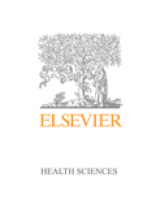New to this edition
- NEW! Refocused and streamlined content eliminates "content saturation" by drastically reducing the amount of advanced practice and examination procedures, techniques, and content that are applicable to nurse practitioner levels; thus keeping readers focused on the most common and important learnings and procedures.
- NEW! Student laboratory manual (sold separately) provides an invaluable resource for mastering physical examination.
- NEW! Improved page layout features a less cluttered and more reader-friendly look thanks to the removal of extraneous tables and illustrations.
- NEW! Improved text design includes updated fonts, photos, and illustrations to make the material more readable and the concepts easier-to-understand.
- NEW! Two new concept overviews incorporate the physiological principles of metabolism and nutrition into text material.
- NEW! Updated electronic documentation content ensures accuracy and congruency with the most current technology and best practices.
- NEW! Updated ethnic/cultural/spiritual variations content reflects the latest trends currently being seen in practice today.
Author Information
By Susan Fickertt Wilson, PhD, RN, Emeritus Associate Professor, Harris College of Nursing and Health Sciences, Texas Christian University, Fort Worth, Texas and Jean Foret Giddens, PhD, RN, FAAN, ANEF, Dean and Professor, School of Nursing, University of Kansas, Kansas City, KS
Unit I. Foundations for Health Assessment
1. Introduction to Health Assessment
2. Interviewing Patients to Obtain a Health History
3. Techniques and Equipment for Physical Assessment
4. General Inspection and Measurement of Vital Signs
5. Ethnic, Cultural, and Spiritual Considerations
6. Pain Assessment
7. Mental Health and Abusive Behavior Assessment
8. Nutritional Assessment
Unit II. Health Assessment of the Adult
9. Skin, Hair, and Nails
10. Head, Eyes, Ears, Nose, and Throat
11. Lungs and Respiratory System
12. Heart and Peripheral Vascular System
13. Abdomen and Gastrointestinal System
14. Musculoskeletal System
15. Neurologic System
16. Breasts and Axillae
17. Reproductive System and the Perineum
Unit III. Health Assessment Across the Life Span
18. Developmental Assessment Throughout the Life Span
19. Assessment of the Infant, Child, and Adolescent
20. Assessment of the Pregnant Patient
21. Assessment of the Older Adult
Unit IV. Synthesis and Application of Health Assessment
22. Conducting a Head-to-Toe Examination
23. Documenting the Head-to-Toe Health Assessment
24. Adapting Health Assessment to an Ill Patient
Appendixes
A. Abbreviations
B. Answer Key
IBC: Special Features




